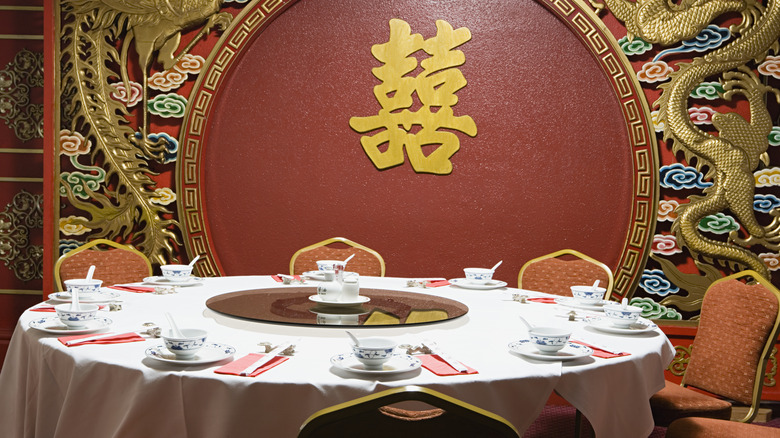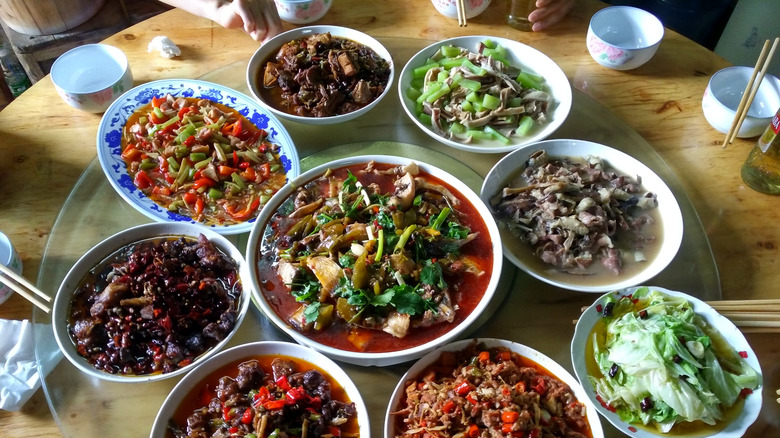Why Chinese Restaurants Almost Always Have Round Tables
Many Chinese restaurants in America will have you sit at a round table with a lazy Suzan (a spinning surface) in the middle. Most people are likely used to these tables, but have you ever stopped and wondered why you see them in Chinese restaurants instead of, say, an Outback Steakhouse?
Meals at a Chinese dining establishment are served communally at these round tables, where the food is placed on the spinning platter in the center and everyone can take what they would like as it turns. You'll be able to dive into dishes such as egg drop soup, kung pao chicken, mapo tofu, and xiaolongbao with ease.
Round tables have long been a part of Chinese culture, well before they came to America, with many appearing in China during the beginning of the Qing dynasty. They now provide a place of equality among guests, promote communal dining, and simply put, are practical.
Creating an equal place
In America, many people have rectangular tables in their homes. So do most restaurants. It is common for a special guest or the person deemed "most important" to sit at the head of the table. This doesn't necessarily promote an equal environment among guests, does it?
In Chinese culture, round tables allow everyone to face one another, making everyone equal no matter their status. Like round tables themselves, this logic can also be dated back to the 17th century. Round tables helped break social norms and hierarchical eating traditions, bringing a more relaxed feel to dining.
Beyond this cultural reason for round tables, they are also more practical. Everyone sitting at a round table is equally as far away from the food. For example, if you are sitting at the head of a rectangular table, even if it has a lazy Susan topper, it's not as convenient for you as it is for those sitting on the side. A round table offers equal opportunity for everyone to dig in.

